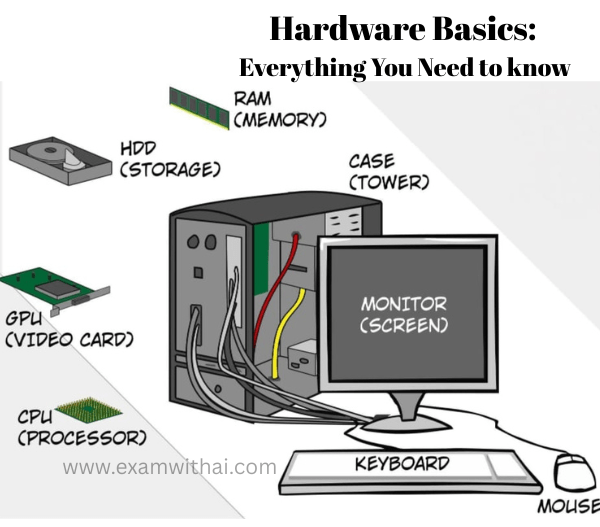Network Topology: How to Choose the Right One
Network Topology
The arrangement or configuration of different components (links, nodes, etc.) in a computer network is referred to as network topology. It explains the physical or logical connections between devices, including computers, switches, routers, and other hardware, as well as the data flow between them.
Network topology can be categorized into two main types:
1. Physical Topology: The actual physical layout of devices and cables.
2. Logical Topology: The way data flows logically within the network, regardless of its physical design.
Common Types of Network Topology
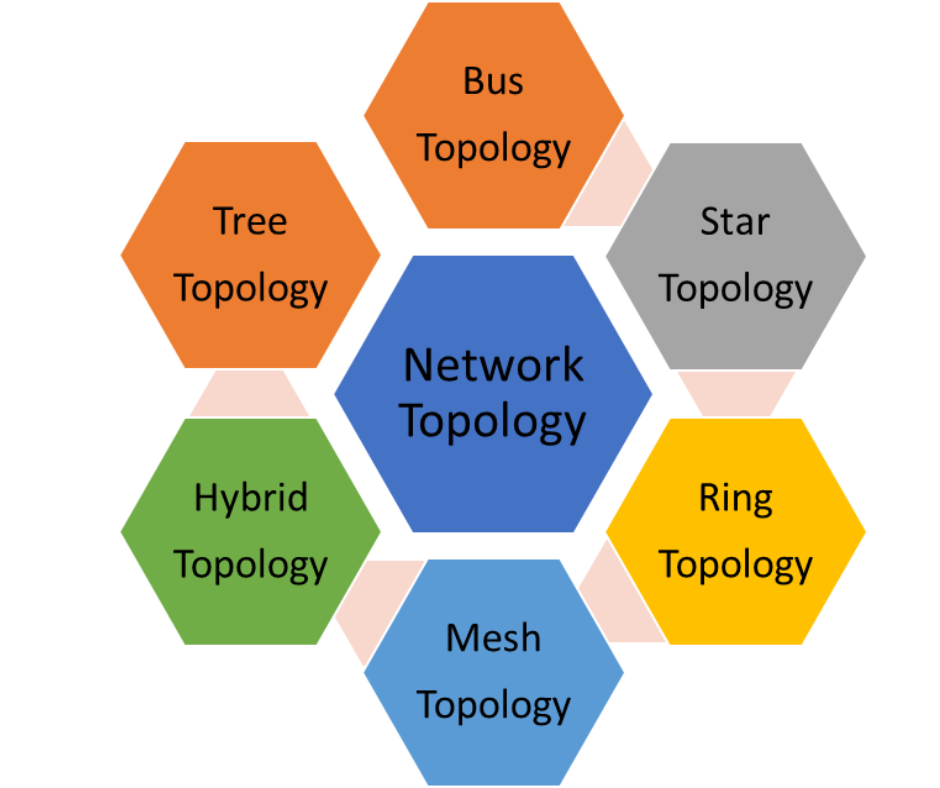
Bus Topology
Bus topology is a network type in which every computer and network device is connected to a single cable. When it has exactly two endpoints, then it is called linear bus topology.
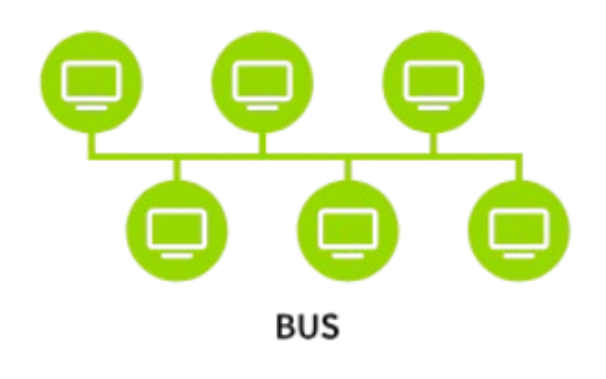
Features of Bus Topology
- The data signal is available to all computers connected to the bus.
- It carries the address of the destination computer.
- Bus topology is good for connecting 15-20 computers.
- Networks connected by bus topology commonly use Ethernet as a protocol.
Advantages of Bus Topology
- The cost is very low.
- Requires less cable length.
- It’s easy to connect computer peripherals to a linear bus.
- It is easy to extend a bus.
- It works well for small networks.
Disadvantages of Bus Topology
- If there is a break in the main cable, the entire network will be shut down.
- The cable limits its own length.
- It is difficult to troubleshoot a bus.
- If the network gets heavy traffic, the node performance of the network fails.
Ring Topology
It is called ring topology because it forms a ring as each computer is connected to the other computer, with the last one connected to the first.
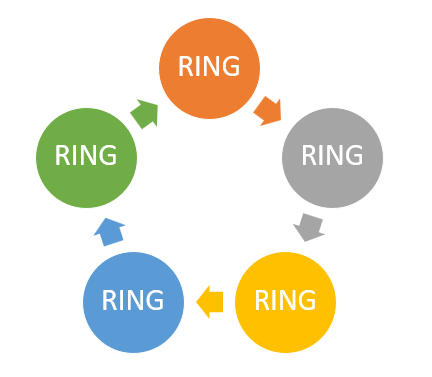
Features of Ring Topology
- It does not have terminated ends; thus, data signals travel in a circle.
- The devices are connected in the ring using twisted-pair cables, coaxial cables, or optical fibers.
- The protocols used to implement ring topology are Token Ring and Fiber Distributed Data Interface (FDDI).
Advantages of Ring Topology
- It is a more reliable network.
- The network is easy to install and maintain, offering simpler upkeep compared to the bus network.
- Adding components such as nodes will not affect the performance of the network.
- Troubleshooting is easy because cable faults can be easily located.
Disadvantages of Ring Topology
- Failure of one computer on the ring affects the whole network.
- Adding or removing devices to the networks would slow down the network activity.
- If any one of the nodes fails, it disturbs all other networks.
Star Topology
In a star network, every host is connected to a central connection point, like a hub or a switch. The connection between a node and hub device is point-to-point.
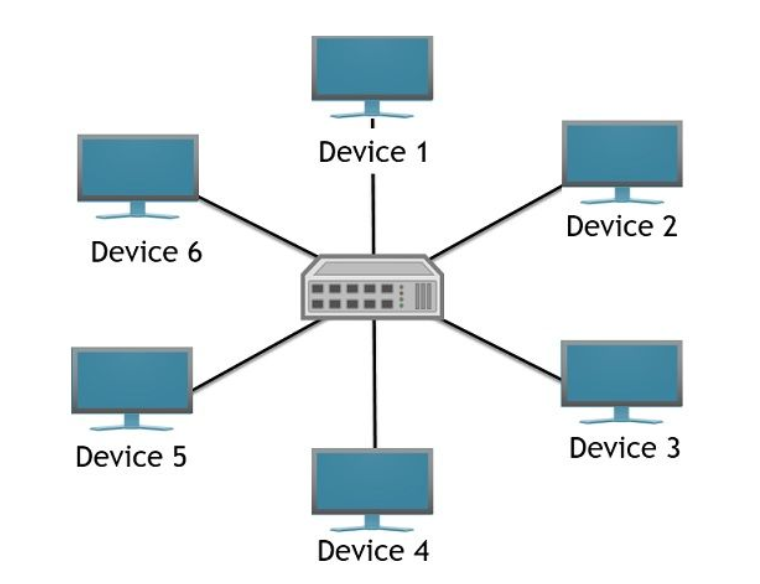
Features of Star Topology
- Every node has its own dedicated connection to the hub.
- A hub acts as a repeater for data flow.
- Ethernet can utilize twisted pair, optical fiber, or coaxial cables.
- The common protocols used in star topology are Ethernet, Token Ring, and LocalTalk.
Advantages of Star Topology
- It is much easier to modify or add new computers to a star network without disturbing the rest of the network.
- Single computer failures do not necessarily bring down the whole star network.
- Easy to manage and maintain the network.
- Cost-effective as it uses inexpensive coaxial cable.
Disadvantages of Star Topology
- It requires more wires because it is expensive to use.
- If the hub fails, then all the connected nodes will not be able to communicate with each other.
Mesh Topology
In a mesh topology, every node has a point-to-point connection to the other node. The network interconnects all the computers with each other.
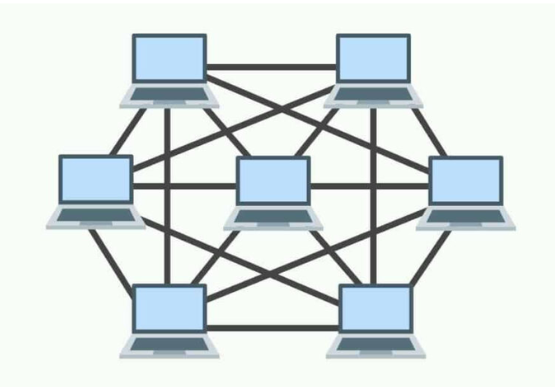
Features of Mesh Topology
- Each of the network nodes, computers, and other devices are interconnected with one another.
- Every node not only sends its own signals but also relays data from other nodes.
- It is very expensive, as there are many redundant connections.
- For example, the Internet.
Advantages of Mesh Topology
- They are reliable.
- There is no link between point-to-point because it is secure.
- Technicians diagnose faults easily.
- It is very fast communication between the nodes.
Disadvantages of Mesh Topology
- It requires space to run the cables.
- The installation process is difficult.
- It requires a number of cables.
- The management of mesh networks is very large and difficult to maintain and manage.
Tree Topology
It has a root node, and all other nodes are connected to it, forming a hierarchy. It is also called hierarchical topology.
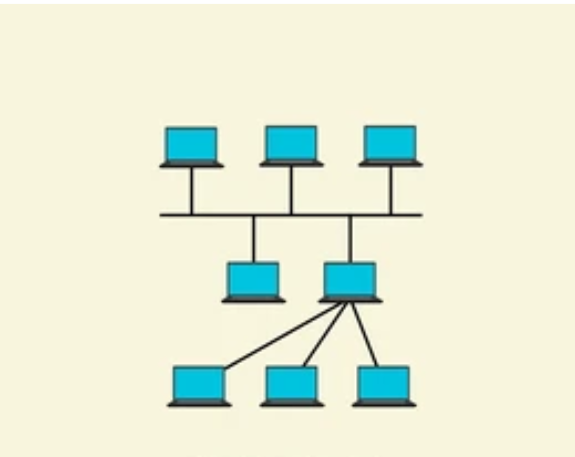
Features of Tree Topology
- It combines characteristics of linear bus and star topologies.
- It is arranged in a group of star workstations connected to a linear bus backbone cable.
- Tree topology designates the top-level node as the root node.
Advantages of Tree Topology
- The hub network connects each computer to its corresponding part.
- It is easy to add computers by extending the cables to connect computers.
- Error detection is an easy process.
- Fast expansion of nodes.
Disadvantages of Tree Topology
- If any faults occur in the node, it is difficult to maintain.
- Requires high-cost devices for broadband transmission.
- Failure in the main bus cable will damage the overall network.

